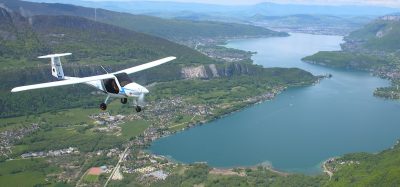Forecasting for efficiency
- Like
- Digg
- Del
- Tumblr
- VKontakte
- Buffer
- Love This
- Odnoklassniki
- Meneame
- Blogger
- Amazon
- Yahoo Mail
- Gmail
- AOL
- Newsvine
- HackerNews
- Evernote
- MySpace
- Mail.ru
- Viadeo
- Line
- Comments
- Yummly
- SMS
- Viber
- Telegram
- Subscribe
- Skype
- Facebook Messenger
- Kakao
- LiveJournal
- Yammer
- Edgar
- Fintel
- Mix
- Instapaper
- Copy Link
Posted: 7 February 2012 | David Gibbs, Aviation Business Manager, The Met Office | No comments yet
The Met Office works across all areas of the aviation industry to help ensure safe and efficient operations. We provide a wide range of services such as specialist web sites, forecaster telephone advice, SMS text alerts and high resolution data services to name a few. These services are tailored to meet the needs of various users so that they have the most accurate information to support their weather dependant decision making, and we also add further value by simplifying the interpretation of meteorological conditions and their impact on airport, aircraft and air traffic management operations.
Delivering weather forecasts and advice that is easy to access, easy to understand and directly relevant for specific purposes is very important. However, without timely and highly accurate content, forecasts will be severely degraded. To achieve the necessary standards presents a significant technological challenge as creating forecasts is a complex process.
The Met Office works across all areas of the aviation industry to help ensure safe and efficient operations. We provide a wide range of services such as specialist web sites, forecaster telephone advice, SMS text alerts and high resolution data services to name a few. These services are tailored to meet the needs of various users so that they have the most accurate information to support their weather dependant decision making, and we also add further value by simplifying the interpretation of meteorological conditions and their impact on airport, aircraft and air traffic management operations. Delivering weather forecasts and advice that is easy to access, easy to understand and directly relevant for specific purposes is very important. However, without timely and highly accurate content, forecasts will be severely degraded. To achieve the necessary standards presents a significant technological challenge as creating forecasts is a complex process. Forecasting involves the application of technology and detailed meteorological knowledge of how the atmosphere, the Earth’s surface and the oceans work. Modern weather forecasting applies scientific knowledge to predict future atmos – pheric conditions across the globe from observations of the current state – made over land, at sea, in the air and from space.
Quality observations
Land observations include those from weather stations at many UK airports and other locations which measure a large variety of meteorological parameters, including air temperature, atmos – pheric pressure, rainfall, wind speed and direction, humidity, cloud height and visibility. Measurements are automatically logged at the weather station which produces observations at minute intervals. The data is then transmitted to a central collecting system based at our headquarters where it is passed through numerous quality control checks. Airports with Met Office weather stations have the option to produce auto-metars which can deliver significant benefits such as reduced workload and increased operational availability. All observations are vital to the process of creating forecasts and every day we receive around 500,000 observations recording conditions around the world. Data sources are always changing and improving. They now include observations taken from more than 36,000km above the Earth, and of the ocean taken from 2,000m below sea-level. Each day, all of these observations are used to create the starting conditions of our weather forecast model. However, even with so many observations we do not have enough information to tell us what the atmosphere is doing at all points on and above the Earth’s surface. There are large areas of ocean, inaccessible regions on land and remote levels in the atmosphere where we have very few, or no, observations. To fill in the ‘gaps’ we combine what observations we do have with forecasts of what we expect the conditions to be. This is a process called data assimilation and gives us our best estimate of the current state of the atmosphere – the first step in producing a weather forecast. Without data assimilation, any attempt to produce reliable forecasts is almost certain to end in failure as even tiny changes in the atmospheric conditions can lead to drastically different weather patterns after only a short time. So it is vital that the current state of the atmosphere is represented as accurately as possible, as from this a forecast of how the future state of the atmosphere will evolve is calculated using a Numerical Weather Prediction (NWP) computer model. This process is highly mathematical and each numerical weather prediction produced involves billions of mathematical calculations which represent well understood laws of physics. Only powerful supercomputers can produce these calculations quickly enough to achieve the required level of accuracy and speed of delivery.
The power behind the forecast
At the Met Office we use an IBM supercomputer which can do more than 100 trillion calculations a second. Its power allows it to take in hundreds of thousands of weather observations from all over the world which it then takes as a starting point for running an atmospheric model containing more than a million lines of code. Without computers weather forecasting as we know it today would not be possible, and we would not be able to deliver the socio-economic benefits that we do, including CO2 emissions reductions. For example, our global aviation forecasts allow airlines to save fuel by using the wind to help them to their destination. We have estimated that this alone helps save around 20 million tonnes of CO2 a year through increased efficiency. Such is the power of the modern generation of computers; they can also run ensemble forecasts – meaning they can run a model several times, each one from a slightly different starting point. This helps forecasters understand possible variations in the forecast and make informed decisions on the most likely outcome. Rather than producing a single forecast with an NWP model, multiple forecasts are produced by making small alterations either to the starting conditions or to the forecast model itself, or both. This has enabled us to develop a range of probabilistic forecast products, which in turn help us to improve our forecasts of the risk of high-impact weather, and the representation of uncertainties in both the initial conditions and the forecast models. Our customers benefit through being able to better understand the uncertainty associated to any upcoming severe weather and so can manage their weatherrelated risks more effectively.
A matter of time
As can be seen a great deal of science and technology goes into producing an initial forecast, but we then have to consider the many different requirements that users are looking for from our forecasts. A key difference is whether the need is for a forecast of the next few hours, or is for the next few days or longer. At short time ranges, a higher level of detail can be forecast with more reliability. Very shortrange forecasting is known as nowcasting. At short-range we use higher resolution models to pick up smaller scale details, and this allows us to create very accurate forecasts for specific locations such as an airfield. Nowcasting maps the current weather, then uses an estimate of how it is moving to forecast the weather a short period ahead of up to three or four hours. To extend the period of predictability nowcasts can be combined with output from numerical weather prediction models and because it is a forecasting technique that can be applied quickly, either by human forecasters or by modest-sized computers, it is possible to update the forecasts frequently – every time there are new observations available. In the Met Office most nowcasts are updated every hour but as computer models improve, the lead times will become shorter and, ultimately, these simple techniques may be used for instant forecasting, such as the immediate path of a tornado. So at short-range, six to 48 hours, it is possible to predict many fine scale details about weather conditions using forecasting models on a regional scale. However, when forecasting more than two days ahead, our global model is needed because the weather we experience several days ahead can be influenced by the weather happening right now on the other side of the world. As we extend the forecast time range even further, out as far as two weeks ahead, the use of ensemble forecasts becomes essential. This is because one to two days ahead the uncertainty is usually in the local details of the weather, but several days ahead the whole weather pattern can often be uncertain. With ensemble forecasting, many separate forecasts are run for the same forecast period, each with slightly different starting conditions. The resulting forecasts become increasingly different from each other as the forecast range increases. The spread of different forecasts, for a given time, gives the forecaster an indication of the uncertainty of the forecast. If all forecasts are producing approximately the same solution, confidence would be high. Confidence can also be estimated by the consistency between the latest model forecast, earlier forecasts and ensemble forecasts. If the model is consistent then confidence may be high but if it suddenly changes then confidence falls rapidly. Forecasts identify severe weather early warnings and advisories are issued by our forecasters. The decision to issue a warning is made after the forecaster has examined forecast data from many sources, combined with their experience and judgement about the likelihood of severe weather occurring. This humanmachine partnership is very important in producing accurate weather forecasts. All these processes operate 24 hours a day 365 days a year and must be produced, quality controlled and disseminated across a wide range of channels to many different users. In addition, in many cases the forecasts must be delivered in accordance with strict deadlines. So despite the complexities the production of the forecast is really just a beginning!
Wide ranging forecasts
Forecasts for the aviation industry are used in many areas and include the Met Office’s international responsibilities as one of only two World Area Forecast Centres (WAFC) providing international forecasting services to meet Annex 3 to the ICAO Convention on Civil Aviation. This means we have to deliver global forecasts of upper winds and temperatures for all flights throughout the world. This specialised information includes distributing global upperwind and temperature data twice a day, significant weather data (SIGWX) charts every six hours for FL250 and above as well as operational meteorology (OPMET) TAFs, METARs and SIGMETs and enables operators to optimise safety and fuel consumption for their aircraft. Also, in our role as London Volcanic Ash Advisory Centre (VAAC), the Met Office aids flight safety by providing reports and forecasts for the movement of volcanic ash plumes within our area of responsibility – the northeast Atlantic. In the UK we also provide expert advice and guidance to the Civil Aviation Authority (CAA) and the national air traffic control centre (NATS), including: gridded winds and temperatures for the assignment of Atlantic tracks; offshore helicopter forecasts, UK low-level weather charts up to FL100, UK spot wind charts up to FL240, all of which are updated four times a day.
Forecasts at your fingertips
We also have a range of innovative web services including: OpenRunway®, which provides online weather forecast information for up to five days ahead that helps airport operators make confident weather-sensitive decisions so that runways stay open and flights run to schedule. By providing critical weather information in one place and alerting users to changing conditions, it becomes easier to plan ahead and reduce disruption. ClearFlight® is designed for flight operators and dispatchers and helps optimise operations through efficient planning and anticipation of weather-related delays at airports anywhere in the world up to five days ahead. Using clear global map viewing, ClearFlight® offers intuitive monitoring of current and forecast weather conditions around the world allowing users to instantly highlight any potential problems and enabling them to plan operations and resource accordingly. Our de-icing service is a proven and unique service offering forecasts of aircraft icing conditions for airports worldwide. The service also offers a tailored guide to holdover times, and proactive alerts to ground staff to enable improved planning of de-icing operations and reduced departure delays.
Targeting weather windows
Our latest service called ‘WeatherWindows’ makes full use of ensemble forecasting, helping users to make confident weather sensitive planning decisions up to 15 days ahead. Input from the industry was vital in its development and, by working with a number of UK airports, including Gatwick Airport; we have ensured WeatherWindows delivers what the customer needs. Airfield Duty Manager at Gatwick Airport, Gary Smith assisted the Met Office with the design of the new service and said: “I look forward to using WeatherWindows as it has been specifically designed to help us plan operations at Gatwick effectively – much further in advance than we have been able to do before.” By using ensemble (probabilistic) forecasting, WeatherWindows has been designed to build confidence into decision making by using a risk-based approach. WeatherWindows auto – matically displays the best time periods for tasks to be carried out, so allowing resources such as staff, materials and contractors to be scheduled effectively.
Looking to the future
WeatherWindows is just one example of how we are using our extensive capabilities to the best advantage of the aviation industry and we continue to drive further innovative develop – ments to ensure that the benefits to be had from the latest technological and scientific advances can be delivered to customers. These developments should increasingly enable users to seamlessly integrate our weather forecasts into their existing systems, supporting a ‘one stop shop’ for all relevant information. This is particularly relevant in relation to Airport Collaborative Decision Making (A-CDM) which the Met Office fully supports and is keen to ensure that weather is high on the A-CDM agenda given the significant risk that weather represents to successful A-CDM operations. Technology and science is also driving advances in support of Air Traffic Management by seeking to make full use of Met Office capabilities, and contributing to maximising capacity and reducing fuel burn and carbon emissions. Ultimately we understand that delivering weather services for aviation is a matter of partnership and inter-dependence – the forecast is dependent on the technology and the science, the delivery and usability of the forecast is dependent on our understanding of customer’s requirements, and customers are dependent on receiving timely, accurate and easily understood forecasts and advice.
About the author
David Gibbs is Aviation Business Manger at the Met Office. With a background in the travel industry and board experience at a large inde – pendent tour operator plus senior management roles within a leading global travel distribution group, David is responsible for Met Office commercial relationships within the aviation industry.
Issue
Related topics
Airport Collaborative Decision Making (A-CDM), Meteorology, Regulation and Legislation

















